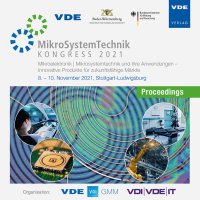Raman spectroscopy as an effective tool for characterizing large-area 2D TMDs deposited from the gas phase
Konferenz: MikroSystemTechnik Kongress 2021 - Kongress
08.11.2021 - 10.11.2021 in Stuttgart-Ludwigsburg, Deutschland
Tagungsband: MikroSystemTechnik Kongress 2021
Seiten: 4Sprache: EnglischTyp: PDF
Autoren:
Becher, Malte; Ostendorf, Andreas (Applied Laser Technologies, Ruhr-Universität Bochum, Bochum, Germany)
Wree, Jan-Lucas; Devi, Anjana (Inorganic Materials Chemistry, Ruhr-Universität Bochum, Bochum, Germany)
Berning, Thomas; Bock, Claudia (Microsystems Technology, Ruhr-Universität Bochum, Bochum, Germany)
Neubieser, Rahel-Manuela; Michel, Marvin D. (Fraunhofer IMS, Duisburg, Germany)
Inhalt:
Transition metal dichalcogenides (TMDs) have gained an enormous interest in the research as the material for the next generation flexible technology of electronic devices. Especially molybdenum disulfide (MoS2) and tungsten disulfide (WS2) are promising electronic materials, due to their variable band gap depending on the thickness of the material. In bulk form, it possesses an indirect band gap while monolayers show direct band gaps. In this paper, Raman spectroscopy is used as a powerful non destructive tool to provide information about the quality of the deposited films throughout the fabrication process of TMD based devices. Firstly, the successful chemical vapor deposition of crystalline MoS2 and WS2 with new Mo and W precursors is confirmed by Raman measurements. Furthermore, the Raman spectra permits conclusion about interface effects, e.g. strain and defects, of large area grown WS2. Finally, an outlook for the usage of Raman spectroscopy in further production steps is given.


